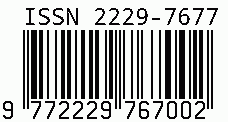
International Journal on Science and Technology
E-ISSN: 2229-7677
•
Impact Factor: 9.88
A Widely Indexed Open Access Peer Reviewed Multidisciplinary Bi-monthly Scholarly International Journal
Plagiarism is checked by the leading plagiarism checker
Call for Paper
Volume 16 Issue 4
October-December 2025
Indexing Partners



















“ SANGEETARNAVA CHANDRIK ” THE TEXTUAL TRADITION OF ODISSI VOCAL MUSIC : A STUDY ACCORDING TO IT’S SECOND CHAPTAR
| Author(s) | Dr. NILADRI KALYAN DAS |
|---|---|
| Country | India |
| Abstract | Sangeetarnava Chandrika is a significant musicological text attributed to King Prataparudra Deva of the Gajapati Empire in Odisha, India. Comprehensive Music Treatise: The text covers various aspects of music, including melody (raga), rhythm (tala), and musical compositions. Odissi Music: Sangeetarnava Chandrika is particularly important for understanding Odissi music, providing insights into its theoretical foundations and practical applications. Cultural Significance: The text reflects the rich musical heritage of Odisha and its cultural connections with other regions of India. Musical Theory: It provides detailed explanations of musical concepts, such as raga, tala, and musical ornamentation (gamaka). Composition and Performance: The text discusses various types of musical compositions and performance practices, offering guidance for musicians. Historical Value: Sangeetarnava Chandrika is a valuable resource for understanding the historical development of music in Odisha and its place within Indian classical music traditions. Influence on Odissi Music: The text has had a lasting impact on the development and preservation of Odissi music, influencing generations of musicians and musicologists. Cultural Preservation: Sangeetarnava Chandrika contributes to the preservation of Odisha's cultural heritage, highlighting the importance of music in the region's traditions. |
| Keywords | Odissi, Music, Text, Cultural, History, Classical Music, Composition. |
| Field | Arts > Movies / Music / TV |
| Published In | Volume 16, Issue 3, July-September 2025 |
| Published On | 2025-07-23 |
| DOI | https://doi.org/10.71097/IJSAT.v16.i3.7192 |
| Short DOI | https://doi.org/g9t2xs |
Share this


CrossRef DOI is assigned to each research paper published in our journal.
IJSAT DOI prefix is
10.71097/IJSAT
Downloads
All research papers published on this website are licensed under Creative Commons Attribution-ShareAlike 4.0 International License, and all rights belong to their respective authors/researchers.

